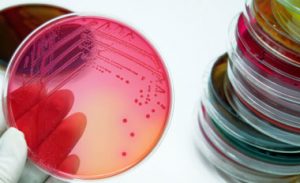Hazard Analysis and Critical Control Points (HACCP)

Your product will look better and will last longer. We can design a system for your company. Our 33 years of industry experience enables us to custom design a program for your business. Our HACCP plans come complete with an implementation process and phone support. A yearly maintenance fee may be required to support changes or additions to your plan.
Contact us a free consultation at 920-582-3249 or email us. We can save you time and money.
Key Facts: The Seven HACCP Principles
Hazard Analysis and Critical Control Points (HACCP) is a process control system designed to identify and prevent microbial and other hazards in food production. It includes steps designed to prevent problems before they occur and to correct deviations as soon as they are detected. Such preventive control systems with documentation and verification are widely recognized by scientific authorities and international organizations as the most effective approach available for producing safe food.
Under the Pathogen Reduction and HACCP Systems regulations, USDA is requiring that all meat and poultry plants design and implement HACCP systems. Plants will be required to develop HACCP plans to monitor and control production operations.
HACCP was implemented first in the largest meat and poultry plants, with 75 percent of slaughter production under HACCP-based process control systems on January 26, 1998. HACCP will be phased in throughout the regulated industry over a 2-year period. Very small plants will be phased in during the final stage, by January 25, 2000.
HACCP is endorsed by such scientific and food safety authorities as the National Academy of Sciences and the National Advisory Committee on Microbiological Criteria for Foods (NACMCF), and by such international organizations as the Codex Alimentarius Commission and the International Commission on Microbiological Specifications for Foods.
HACCP systems must be based on the seven principles articulated by the NACMCF. The seven principles are: (1) hazard analysis, (2) critical control point identification, (3) establishment of critical limits, (4) monitoring procedures, (5) corrective actions, (6) record keeping, and (7) verification procedures.
The Seven HACCP Principles
- Principle 1: Conduct a hazard analysis.
- Plants determine the food safety hazards identify the preventive measures the plant can apply to control these hazards.
- Principle 2: Identify critical control points.
- A critical control point (CCP) is a point, step, or procedure in a food process at which control can be applied and, as a result, a food safety hazard can be prevented, eliminated, or reduced to an acceptable level. A food safety hazard is any biological, chemical, or physical property that may cause a food to be unsafe for human consumption.
- Principle 3: Establish critical limits for each critical control point.
- A critical limit is the maximum or minimum value to which a physical, biological, or chemical hazard must be controlled at a critical control point to prevent, eliminate, or reduce to an acceptable level.
- Principle 4: Establish critical control point monitoring requirements.
- Monitoring activities are necessary to ensure that the process is under control at each critical control point. FSIS is requiring that each monitoring procedure and its frequency be listed in the HACCP plan.
- Principle 5: Establish corrective actions.
- These are actions to be taken when monitoring indicates a deviation from an established critical limit. The final rule requires a plant’s HACCP plan to identify the corrective actions to be taken if a critical limit is not met. Corrective actions are intended to ensure that no product injurious to health or otherwise adulterated as a result of the deviation enters commerce.
- Principle 6: Establish record keeping procedures.
- The HACCP regulation requires that all plants maintain certain documents, including its hazard analysis and written HACCP plan, and records documenting the monitoring of critical control points, critical limits, verification activities, and the handling of processing deviations.
- Principle 7: Establish procedures for verifying the HACCP system is working as intended.
- Validation ensures that the plans do what they were designed to do; that is, they are successful in ensuring the production of safe product. Plants will be required to validate their own HACCP plans. FSIS will not approve HACCP plans in advance, but will review them for conformance with the final rule.
- Verification ensures the HACCP plan is adequate, that is, working as intended. Verification procedures may include such activities as review of HACCP plans, CCP records, critical limits and microbial sampling and analysis. FSIS is requiring that the HACCP plan include verification tasks to be performed by plant personnel. Verification tasks would also be performed by FSIS inspectors. Both FSIS and industry will undertake microbial testing as one of several verification activities. The occurrence of the identified food safety hazard.
